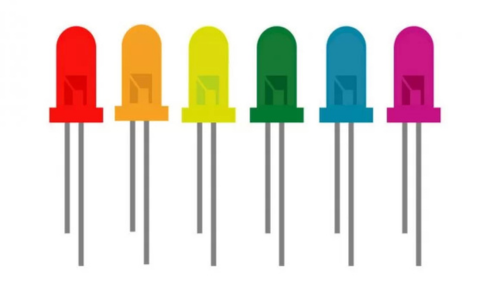Electronics enthusiasts, hobbyists, and students are always looking for practical ways to combine learning with creativity. Two essential components that can significantly enhance your projects are the 5mm led and a rain detector. These components are widely used in DIY electronics, robotics, and smart home applications. Understanding how they work and how to integrate them can take your projects to the next level.
Understanding the 5mm LED
The 5mm LED is one of the most common types of light-emitting diodes used in electronics. Its popularity stems from its compact size, brightness, and versatility. Whether you’re building a simple circuit for indication purposes or designing complex displays, the 5mm LED is often the go-to choice.
Some key features of a 5mm LED include:
- Low Power Consumption – LEDs use very little energy compared to traditional bulbs, making them efficient for battery-powered projects.
- Durability – They have a long lifespan and can withstand minor shocks and vibrations.
- Color Variety – Available in multiple colors including red, green, blue, and white, allowing for creative project designs.
These LEDs are ideal for indicating system status, acting as a visual alert, or even creating light patterns in hobbyist projects. Their small size also makes them perfect for integrating into compact circuits or wearable electronics.
Introduction to Rain Detectors
A rain detector is an electronic sensor that detects the presence of water or rainfall. It’s a useful component for automation systems and weather-based projects. When it senses moisture, it can trigger actions such as turning on a water pump, activating an alarm, or even controlling irrigation systems.
Some advantages of using a rain detector include:
- Automatic Response – It can instantly activate devices when rain is detected, reducing manual effort.
- Versatility – Suitable for outdoor projects like garden watering systems or vehicle protection systems.
- Safety – Helps prevent water-related damage by alerting or triggering safety mechanisms.
Rain detectors usually work with a simple electronic output that can be connected to a microcontroller or relay module. When water is detected, the sensor completes a circuit or sends a digital signal, making it easy to integrate into your projects.
Combining 5mm LED and Rain Detector in Projects
The combination of a 5mm LED and rain detector allows for practical and visually appealing electronics projects. For instance:
- Rain Alert System – The 5mm LED can light up when the rain detector senses water, serving as a clear visual indicator.
- Smart Irrigation System – A rain detector can prevent overwatering by signaling the system, while LEDs indicate system status.
- Weather Monitoring Station – Using multiple LEDs to represent different sensor readings, including rain detection, temperature, and humidity.
Integrating these components requires basic knowledge of circuits. Typically, the rain detector connects to a power supply and microcontroller, while the 5mm LED is used as a visual signal, often with a resistor to limit current and prevent burnout.
Tips for Choosing the Right Components
- LED Brightness – Ensure the LED is bright enough for outdoor or indoor visibility.
- Rain Detector Sensitivity – Choose a sensor that can accurately detect rain or water droplets for reliable results.
- Durability – For outdoor projects, opt for weather-resistant components to ensure long-term performance.
Final Thoughts
A 5mm LED and rain detector are simple yet powerful components that can make your electronics projects more interactive, functional, and visually appealing. Whether you’re a student experimenting with circuits, a hobbyist creating a smart garden system, or a professional designing automated solutions, these components offer flexibility and ease of use.
By incorporating LEDs as indicators and rain detectors for environmental sensing, you not only improve the functionality of your projects but also enhance your understanding of practical electronics applications. Investing in quality components ensures reliability and opens up a world of possibilities for creative innovation.
Tags: 5mm led
